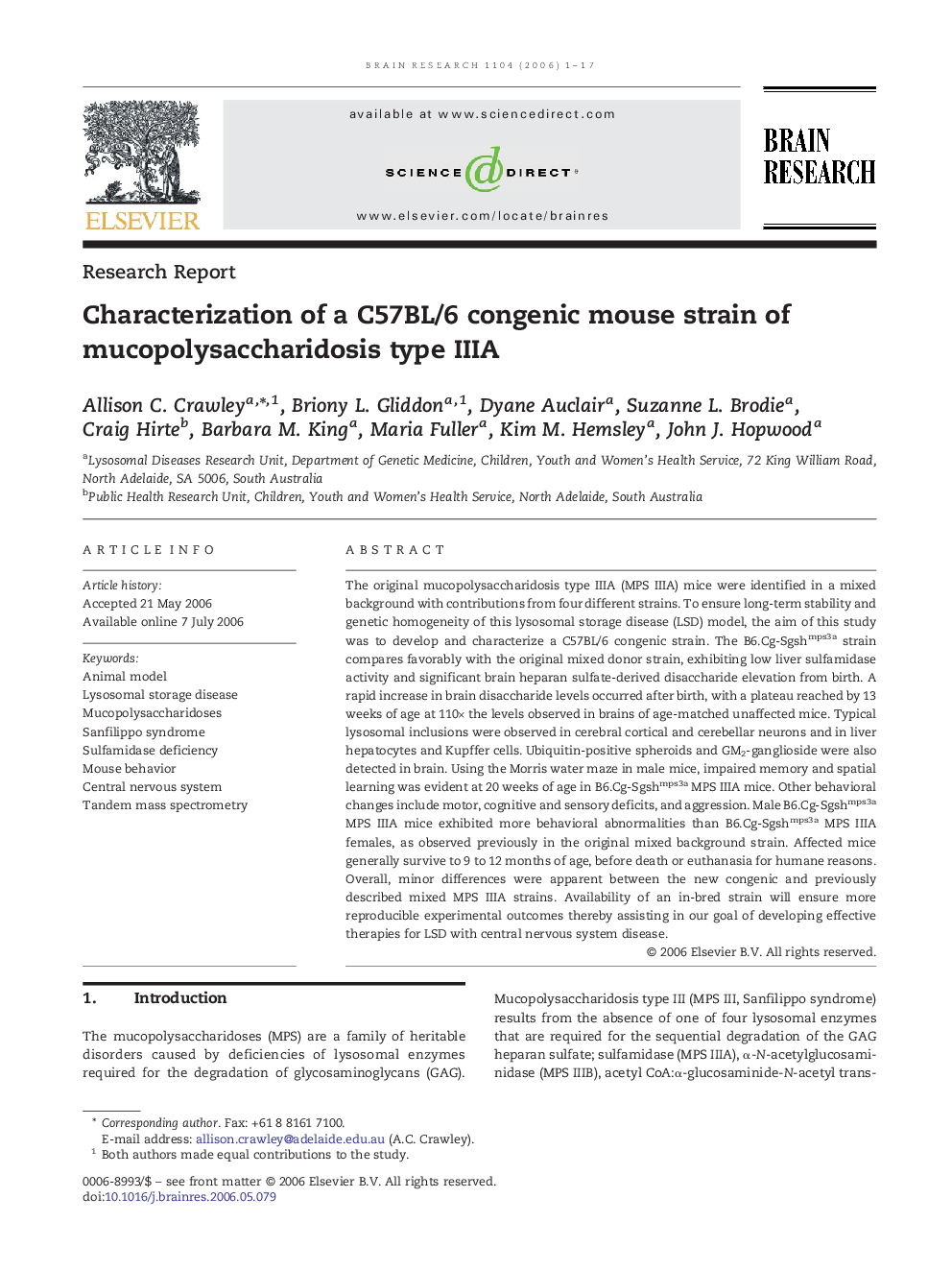| Article ID | Journal | Published Year | Pages | File Type |
|---|---|---|---|---|
| 4332404 | Brain Research | 2006 | 17 Pages |
The original mucopolysaccharidosis type IIIA (MPS IIIA) mice were identified in a mixed background with contributions from four different strains. To ensure long-term stability and genetic homogeneity of this lysosomal storage disease (LSD) model, the aim of this study was to develop and characterize a C57BL/6 congenic strain. The B6.Cg-Sgshmps3a strain compares favorably with the original mixed donor strain, exhibiting low liver sulfamidase activity and significant brain heparan sulfate-derived disaccharide elevation from birth. A rapid increase in brain disaccharide levels occurred after birth, with a plateau reached by 13 weeks of age at 110× the levels observed in brains of age-matched unaffected mice. Typical lysosomal inclusions were observed in cerebral cortical and cerebellar neurons and in liver hepatocytes and Kupffer cells. Ubiquitin-positive spheroids and GM2-ganglioside were also detected in brain. Using the Morris water maze in male mice, impaired memory and spatial learning was evident at 20 weeks of age in B6.Cg-Sgshmps3a MPS IIIA mice. Other behavioral changes include motor, cognitive and sensory deficits, and aggression. Male B6.Cg-Sgshmps3a MPS IIIA mice exhibited more behavioral abnormalities than B6.Cg-Sgshmps3a MPS IIIA females, as observed previously in the original mixed background strain. Affected mice generally survive to 9 to 12 months of age, before death or euthanasia for humane reasons. Overall, minor differences were apparent between the new congenic and previously described mixed MPS IIIA strains. Availability of an in-bred strain will ensure more reproducible experimental outcomes thereby assisting in our goal of developing effective therapies for LSD with central nervous system disease.
